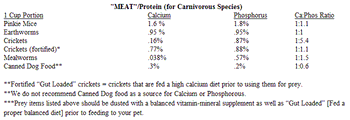
In this presentation we will discuss the various groupings of parasites seen infesting reptiles & amphibians, how to identify them and thoughts on proper treatment to rid the hosts of these parasites.

In this presentation we will discuss the various groupings of parasites seen infesting reptiles & amphibians, how to identify them and thoughts on proper treatment to rid the hosts of these parasites.

Kidney related diseases are a major cause of illness and death in captive lizards. Improper captive husbandry and diet are the most common predisposing causes of chronic renal failure - which is typically seen in adult lizards. Whereas acute onset of renal disease is often due to infectious or toxic causes (Including medications) and appears to effect any age animal and is typically more sporadic in occurrence.

Reptile surgery can be very complicated. Luckily in this day & age of Reptile Medicine, we are afforded several options for anesthetic as well as surgical techniques. This lecture will present a few in order to give an overview of some of the current options available to the practitioner.

There are greater than 6500 species of extant reptiles with a wide variety of behaviors and structural morphologies designed to allow them to escape notice or fight off enemies, reproduce, obtain food and adapt to their environment. This lecture describes some commonly seen and some less commonly seen behaviors and morphological adaptations in reptiles.

Reptiles are very resilient and capable of surviving physiological changes e.g. severe hypoxemia, that would rapidly kill a mammal. Hypothermia should not be used as a method of restraint. It will induce immobility but will not provide analgesia. Hypothermia will also impair drug metabolism, digestion and immune function.

In general, information about an animal's origin and natural history is often the basis for recommendations concerning dietary management of these animals in captivity. In captivity, whether in an aquarium, screened cage, or (inappropriately) loose in the house – reptiles and amphibians have specific ranges for temperature, humidity, and ventilation which are essential for optimal health. Maintenance of an animal outside of its optimal range is a physiological stress that often results in poor intake, digestion/absorption, and utilization of food.

Reptile surgery can be very complicated. Luckily in this day and age of reptile medicine, we are afforded several options for anesthetic as well as surgical techniques.

Thermal burns in amphibians and especially reptiles are very common injuries seen by herp veterinarians.

In this presentation we will discuss the various groupings of parasites seen infesting reptiles & amphibians, how to identify them and thoughts on proper treatment to rid the hosts of these parasites.

Kidney related diseases are a major cause of illness and death in captive lizards.

Reptiles and amphibians are continuing in their popularity as pets in the United States and throughout the world.

Published: October 1st 2008 | Updated:

Published: October 1st 2008 | Updated:

Published: October 1st 2008 | Updated:

Published: October 1st 2008 | Updated:

Published: October 1st 2008 | Updated:

Published: May 1st 2011 | Updated: